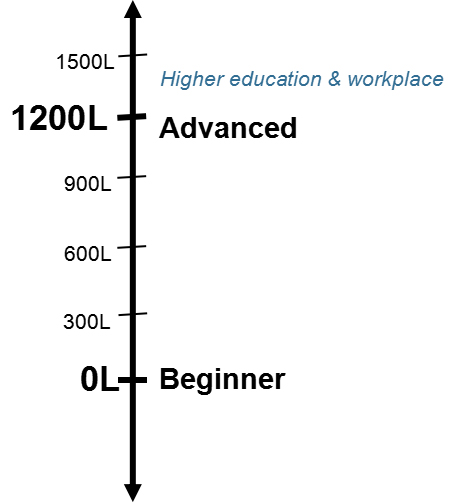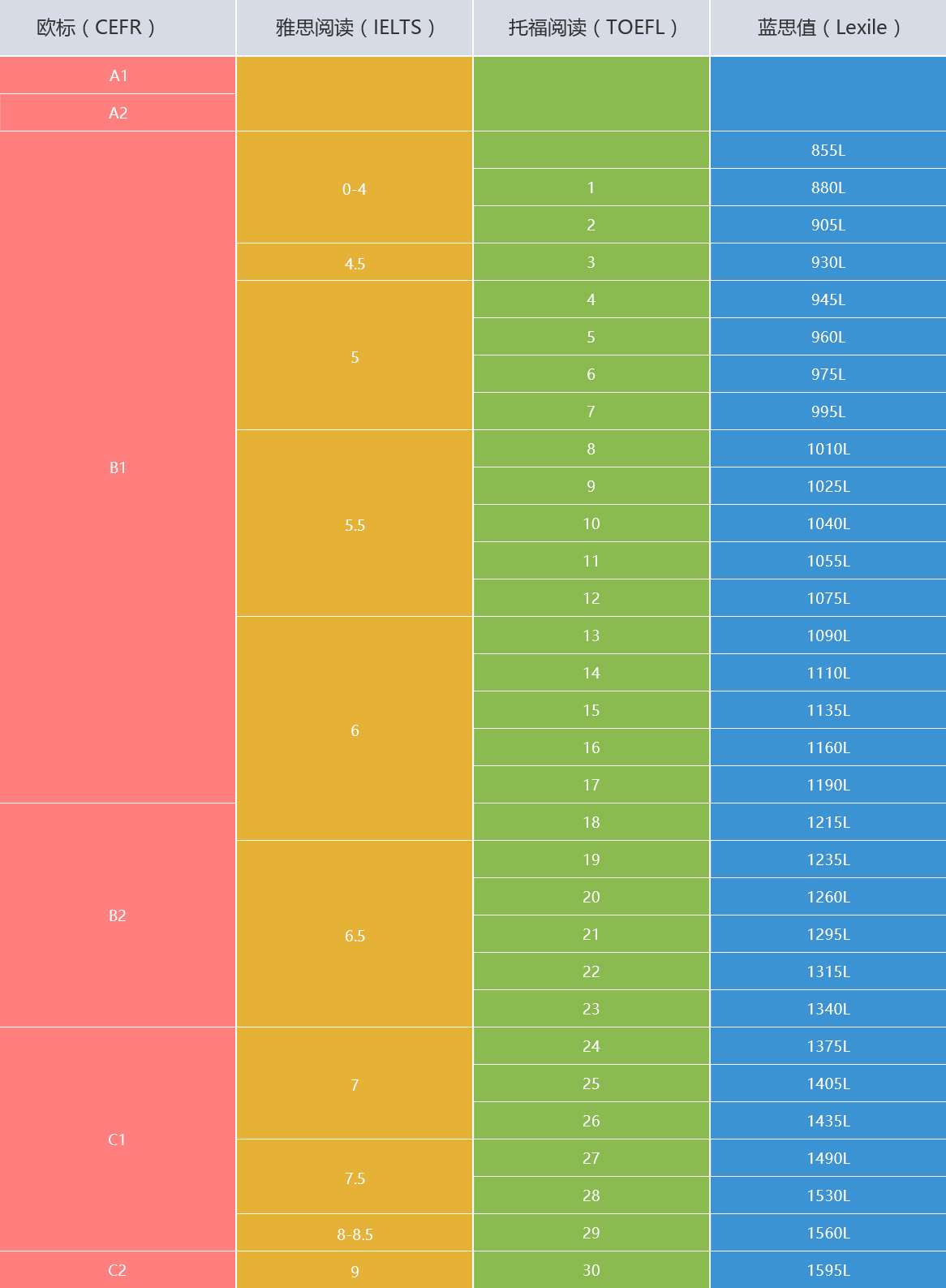 首页 >
蓝思分级阅读系统理念
首页 >
蓝思分级阅读系统理念 蓝思阅读分级体系(Lexile Framework)是经过20多年的研究开发出来的英语阅读能力评级系统。全球180多个国家、450家以上的出版社,数千种期刊及12万本书采用了蓝思难度分级。
蓝思阅读分级体系的目标是开发一套衡量学生阅读水平和标志文章难易程度的标准,是衡量阅读能力(Reader Ability)与文章难易度(Text Readability)的科学方法。蓝思阅读分级既可以让学生测试和确定自己的阅读水平; 也可以给出版物标志蓝思难度分值,使学生可以找出符合自己阅读难度的读物去阅读。
蓝思阅读分级体系以语义难度(Semantic Difficulty)、句法复杂度(Syntactic Complexity)、结构指标(Structure Indicator)和词汇指标(Decoding Indicator)为主要衡量标准,可以从读物难度和读者阅读能力两个方面进行衡量,使用的是同一个度量标尺,因此读者可以根据自己的阅读能力,轻松地选择适合自己的阅读材料。蓝思阅读测评体系使用数字加字母“L”作为衡量难度的度量标尺,难度范围为0L~1700L,数字越小表示读物难度越低或读者阅读能力越低,反之则表示读物难度越高或读者阅读能力越高。

语义难度:一个词汇在阅读当中出现的频率越高,即越常见,读者就会越熟悉,相应阅读起来难度就会越低;相反,读者在阅读中遇到的词汇越不常见,阅读难度就越高。这里所指的单词出现的频率,不是一个单词出现在特定段落中的次数,而是指此单词出现在蓝思分析将近60亿单词的素材所出现的频率。
句法难度:句子越长,难度就越高。因为长句子的从句较多,读者不仅要接收更多的信息,还要处理更复杂的句子关系,同时也要拥有更好的短时间记忆能力。因此,句子越长,蓝思等级越高;相反,句子越短,蓝思等级越低。
结构指标:通过计算文本重复的程度,来评估文本整体的难度。
词汇指标:通过统计单词中元音、辅音和发音等,对用词难度进行评估。

Cell phones have changed over time. Lucky for us! The first cell phones were heavy. And very expensive.
The DynaTAC came out in 1983. It was made by Motorola. It weighed about 2 pounds (907 grams). You could talk for around 30 minutes. And then? Bye-bye battery. It cost $4,000. Almost as much as some cars!
Simon has been called the world's first smartphone. IBM made it. It was introduced in 1993. It had a clock, a calendar, and e-mail. But there was no camera. In 2000, Sharp made a new cell phone. It was one of the first to take pictures.
Then, in 2007, Apple sold the first iPhone. It weighed 4.8 ounces (135 grams). It had a big screen. It also had lots of apps. In 2008, the first Android phone came out. It weighed 4.4 ounces (125 grams).
Cell phones are still changing. They keep getting smarter!
It's 1983, and you're a major player at a huge corporation who's shopping for a cell phone. The Motorola DynaTAC just hit the market, and the consensus is it's totally awesome—you can talk for around 30 minutes before the battery runs out, it recharges in 10 hours, and it's only about the size of a brick. At $4,000, it costs almost as much as some cars, but that's the price you've got to pay for what is the epitome of cutting-edge telecommunications technology.
In the 21st century, the DynaTAC doesn't sound like a dynamite deal, does it? Compared to today's smartphones, early cell phones were heavy, exorbitantly expensive, and shockingly short on handy features. The DynaTac couldn't take pictures, send text messages, remind you to feed your hedgehog, or entertain you with a steady stream of TikTok videos and cat memes.
Lucky for us, cell phones have changed a lot over time. Their evolution is a great example of how technology develops from earlier inventions and gradually becomes more advanced, reliable, and widespread, so let's take a look at how cell phones grew up and got smart.
The first true mobile phone that people could buy (if they could afford it) was the Mobira Senator, which was introduced by the company Nokia in 1982. This big, boxy beast weighed a whopping 22 pounds (about 10 kilograms), about as much as a full-grown beagle.
A year later, Motorola debuted the DynaTAC, the first commercial cell phone that was handheld and small enough to be truly portable. It was about 2 pounds (907 grams)—the average weight of a guinea pig—which is a hefty handful by today's standards but made it a miniature marvel at the time. Even more compact, the MicroTAC, which Motorola brought out in 1989, was the world's first flip phone. It folded up small enough to fit in your pocket, but it still had a huge price tag, costing customers $3,000.
While the earliest cell phones were all about talking, in the 1990s these gadgets got more features. Simon, introduced in 1993 by IBM, has since been dubbed the world's first smartphone, although people didn't use that term until later. This mighty multitasker, which weighed 18 ounces (510 grams), had a clock and calendar, an address book, a calculator, and even e-mail.
......